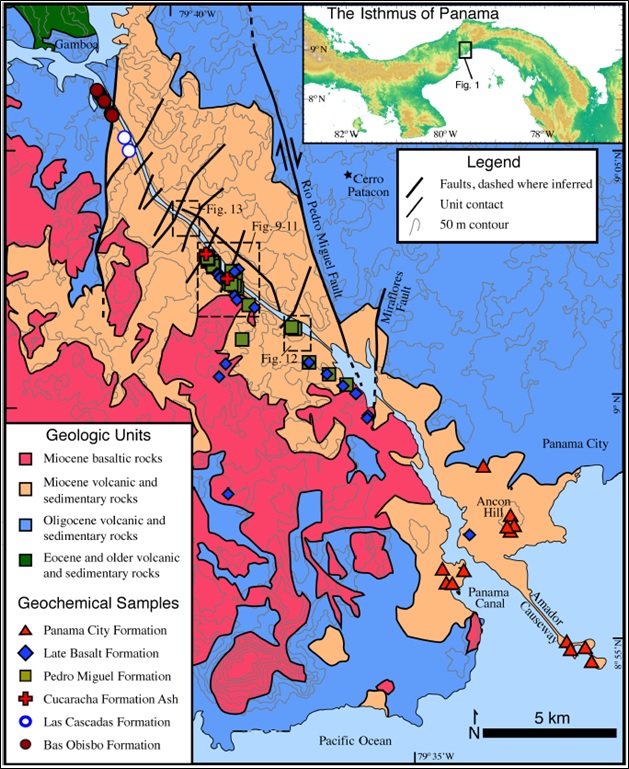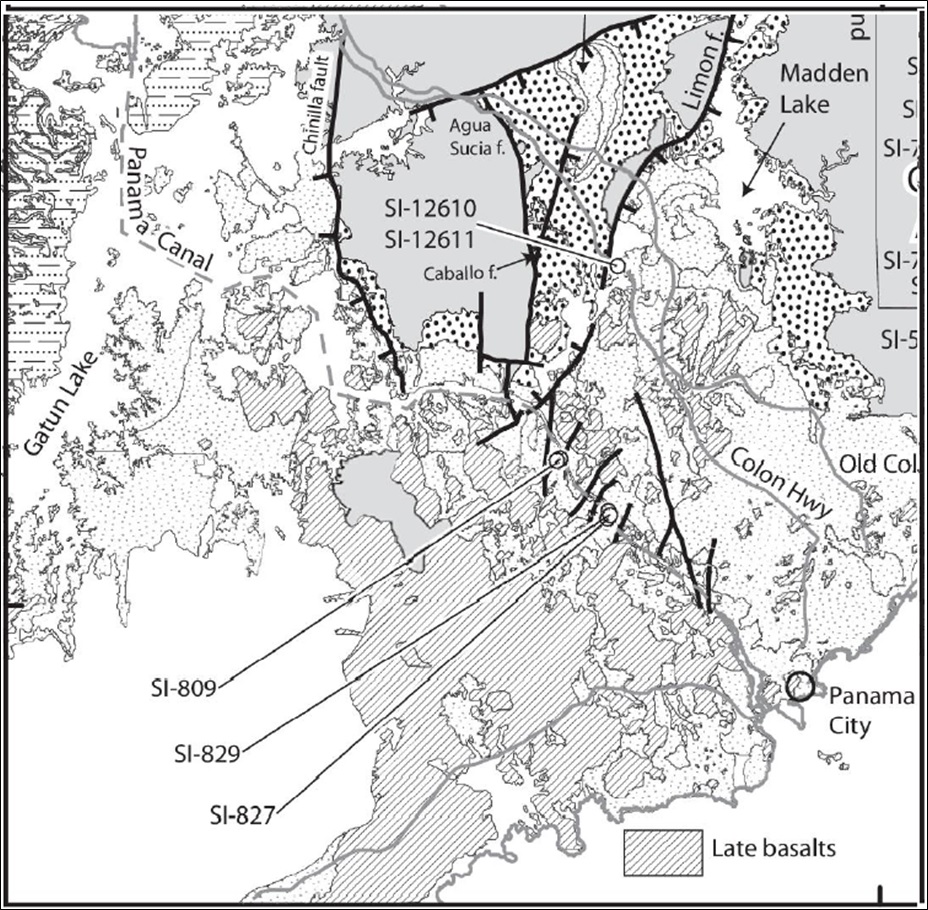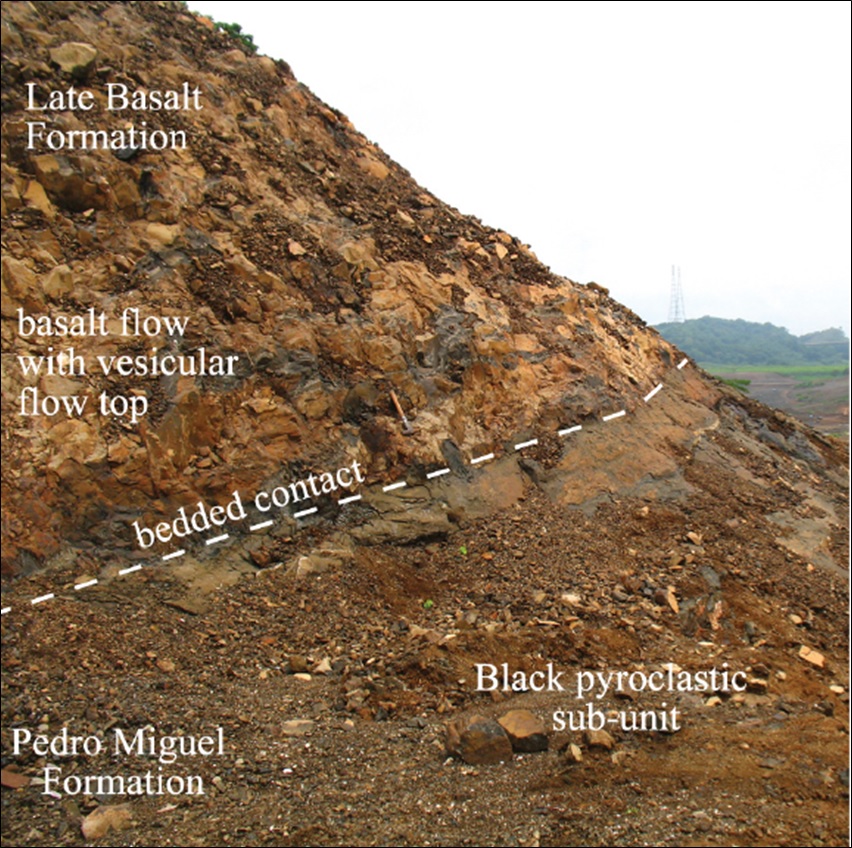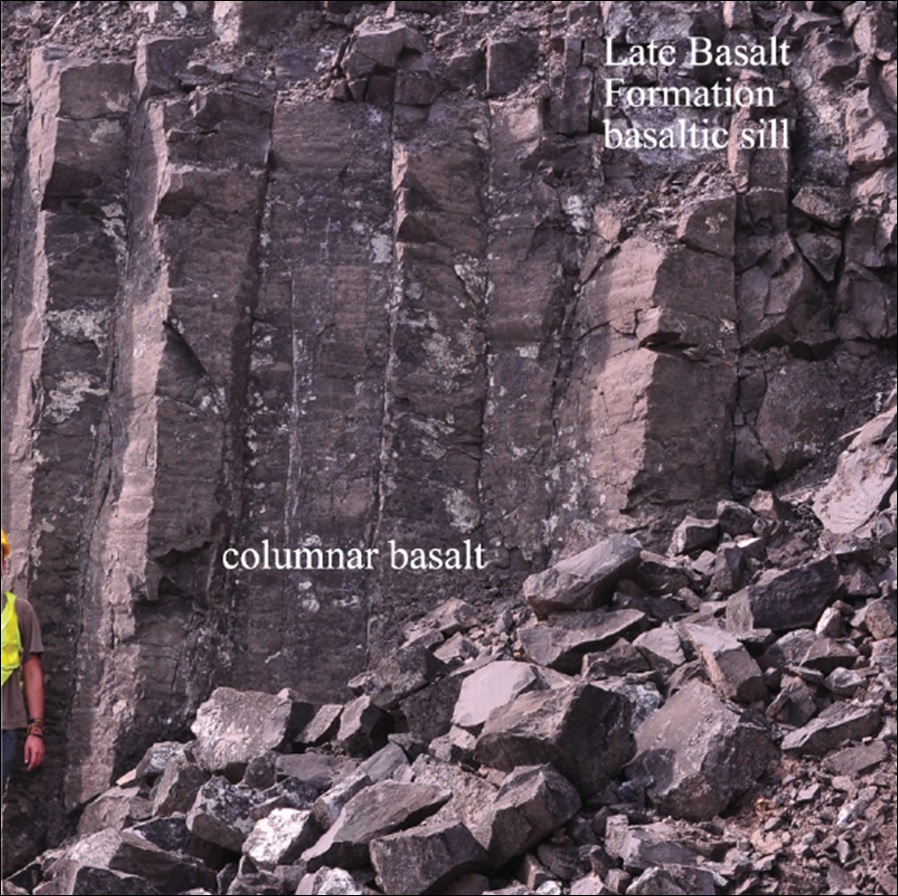Late Basalt Fm
Type Locality and Naming
[Figure 1. Geological map of part of Central Panama showing the location of the Late Basalt Fm. Modified from Montes et al. (2012b).]
[Figure 2. Geologic map of the southern Panama Canal Basin adapted from Stewart and Stewart. Symbols indicate the location of geochemical samples. Boxes denote the location of high-resolution mapping areas. Map from Farris et al. (2017).]
Synonym:
Lithology and Thickness
Thickness: 135m
[Figure 3. Columnar basalts within a large sill.]
[Figure 4. Near vertical marginal contact between a sill of Late Basalt Fm and the Cucaracha Fm.]
[Figure 5. A stratigraphic contact between underlying Pedro Miguel Fm pyroclastic deposits and overlying Late Basalt Fm lava flows. Photos from Farris et al. (2017).]
Relationships and Distribution
Lower contact
Upper contact
Regional extent
GeoJSON
Fossils
Age
Depositional setting
Additional Information
- The Late Basalt Fm is an informal name for the stratigraphically youngest volcanic unit exposed along the Culebra Cut.
- References: Woodring (1957); Stewart et al. (1980); Wörner et al. (2009); Montes et al. (2012b); Farris et al. (2017).




